Living a self sustainable lifestyle has become increasingly popular in today’s fast-paced, consumer-driven world. The emphasis of this way of living is on independence, simplicity, and a close relationship with the natural world. People can lessen their impact on the environment, promote personal development, and build a more robust and contented existence by embracing self-sustainability. This blog will explore the many facets of leading a self sustainable lifestyle and offer helpful advice and insights to support you as you set out on this fulfilling path.
Understanding Self Sustainable Lifestyle
The practice of meeting one’s needs with the least amount of dependence on other resources is known as Self Sustainable Lifestyle. This entails growing your own food, creating electricity, preserving water, and cutting down on waste. Developing a lifestyle that is socially conscious, economically sustainable, and ecologically friendly is the aim.
.webp)
The Advantages of Living a Self Sustainable Lifestyle
- Environmental Impact: You may lessen your carbon footprint by reducing your reliance on mass-produced items and services. Environmental protection is aided by sustainable activities including trash reduction, renewable energy, and organic farming.
- Economic Savings: You can save a lot of money on household bills by growing your own food and energy. Although there may be a large initial cost associated with sustainable technologies, there are significant long-term savings.
- Health & Well-Being: Having access to fresh, wholesome products is guaranteed when you grow your own food. Building and gardening are examples of physical pursuits that improve mental and physical health.
- Resilience: Living a self-sufficient lifestyle makes you more resilient to changes in the market and shortages of resources. This resilience is especially helpful during difficult times.
- Personal Fulfillment: A sense of freedom and success is fostered by self-sustainability. It is immensely satisfying to build something with your own hands and see it flourish.
How to Achieve Self Sustainable Lifestyle in Realistic Terms
1. Food Production
Growing your own food is one of the most essential components of Self Sustainable Lifestyle. To get you started, follow these steps:
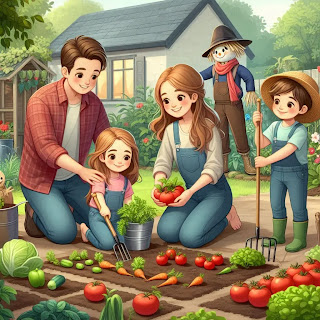
- Launch a Garden: You may cultivate a range of fruits, vegetables, and herbs in a garden, no matter how big or tiny your backyard is. Begin with easy-to-grow plants like tomatoes, lettuce, and basil. Acquire knowledge about crop rotation and companion planting to optimize yields and preserve soil health.
- Composting: Create nutrient-rich compost out of leftover food and garden trash. This gives your garden useful organic materials while also cutting down on waste.
- Raise Livestock: If you have the space, you might want to raise goats for milk or hens for eggs. Additionally, livestock can act as natural fertilizers and aid in pest management.
- Harvest Preservation: Acquire skills in preserving, drying, and fermenting to store extra produce. This guarantees a consistent food supply all year long.
2. Energy Independence
Being less dependent on outside energy sources is essential to Self Sustainable Lifestyle:
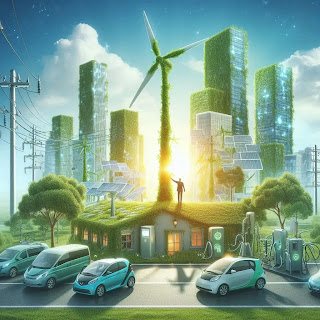
- Solar Power: Get solar panels in order to harness the power of the sun. Solar power systems are useful for heating water, producing energy, and lighting.
- Wind Energy: You might want to install a wind turbine if you reside in a windy area. A dependable and effective power source is wind energy.
- Energy Efficiency: Use energy-efficient appliances, seal windows and doors, and insulate your home’s walls and roof to increase its energy efficiency. Making small adjustments like moving to LED lightbulbs and unplugging electronics while not in use can have a significant impact.
3. Water Conservation
Being self sufficient requires saving water, which is a valuable resource:
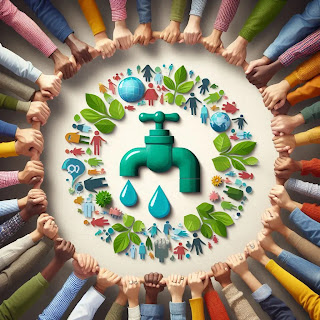
- Rainwater collecting: To collect and store rainwater, install rain barrels or a rainwater collecting system. If appropriately filtered, this water can be used for drinking, flushing toilets, and irrigation.
- Greywater Systems: Recycle water for irrigation by using it from showers, sinks, and washing machines. Greywater systems have the potential to drastically lower wastewater generation and water use.
- Water-Saving Fixtures: To save water, install low-flow faucets, showerheads, and toilets. Leaks should be fixed as quickly as possible to prevent water waste.
4. Waste Reduction
A Self Sustainable Lifestyle requires minimizing waste:
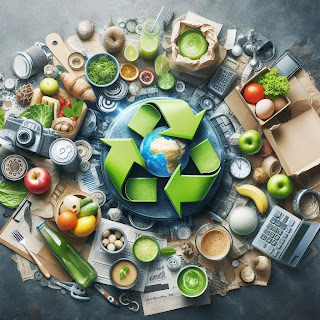
- Use the three Rs: reduce, reuse, recycle to cut down on trash. To keep materials out of landfills, reduce consumption, reuse items whenever practical, and recycle materials.
- Zero Waste Practices: Make thoughtful decisions regarding the things you purchase in order to live a zero-waste lifestyle. Choose reusable products over disposable ones, purchase in bulk, and look for items with minimal packaging.
- Use your imagination when working on do-it-yourself crafts and upcycling. Repurpose containers, create new furniture out of old ones, and make your own cosmetics and cleaning supplies.
5. Building and Housing
Your house can be more energy-efficient and environmentally friendly by using sustainable building practices:
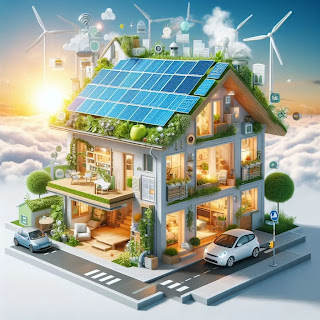
Natural Building Materials: When building or remodeling your home, consider using materials like recycled wood, cob, and straw bales. When it comes to the ecology, these materials are less harmful than traditional building materials.
Build your house using passive solar design to maximize the use of available natural light and heat. Thermal mass, adequate insulation, and large south-facing windows can all help lower the need for heating and cooling.
Off-Grid Living: If you want to live off the grid, you should detach yourself from public utilities. Waste management methods, water conservation, and renewable energy sources must all be used in tandem to achieve this.
6. Community and Skills Sharing
Self Sustainable Lifestyle is about to creating resilient, encouraging groups rather than being alone:
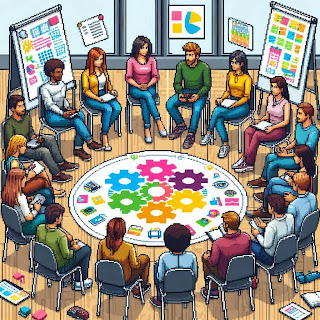
- Establish or Join a Community: Community gardens, internet forums, and local sustainability clubs are great places to meet like-minded people. Exchange information and resources, and help one another in your endeavors.
- Learn and impart useful skills including sewing, carpentry, gardening, and food preservation. Workshops and skill-sharing events held in the community can be very beneficial.
- Exchanging and Trading: Take into consideration exchanging products and services with others as an alternative to buying things. This strengthens ties within the community and lessens need on money.
Getting Past Obstacles
There are obstacles to leading a self sustainable lifestyle, but they can be overcome with tenacity and flexibility:
- Initial Investment: Investing in sustainable technology and systems might come with a hefty price tag. Start modest and increase your efforts bit by bit. Seek out community initiatives, grants, and subsidies that promote sustainable living.
- Learning Curve: It takes time and effort to pick up new abilities and information. Try to find educational materials like books, online classes, and local experts, and be patient with yourself.
- Climate and Site: Not every site can support every sustainable strategy. Modify your tactics to fit the resources and climate where you live. For instance, solar energy works better in sunny locations, but water conservation is essential in arid ones.
- Time and Effort: It takes commitment and diligence to maintain a self-sustainable lifestyle. Set priorities for your work, make a schedule, and divide the burden among friends and family.
- Community Support: Locating a group of people who share your beliefs might offer the inspiration and support you need. Workshops, local sustainability clubs, and online forums can be great places to meet others and share knowledge.
- Staying Informed: Stay up to date on the latest advancements in self sustainable lifestyle. Keeping up with the latest developments in technology and techniques will help you integrate the most effective practices into your daily routine.
- Staying Motivated: Recall the reason for your initial steps towards achieving self sustainable lifestyle. Thinking about the advantages for the environment, the economy, and you personally can keep you motivated when things get hard.
In summary
Adopting a self sustainable lifestyle is a great method to save money, lessen your influence on the environment, and find personal joy. You may build a more resilient and peaceful life by producing energy, growing your own food, preserving water, and reducing waste. Recall that achieving self sustainable lifestyle is a process rather than a goal. Make modest, doable adjustments at first, then build on them over time. You are getting closer to a future that is healthier, happier, and more sustainable with each step you take toward self sustainable lifestyle.
A self sustainable lifestyle involves more than just doing the necessary actions; it also entails embracing a resilient, creative, and community-minded mindset. You may live a life that is not only more sustainable but also incredibly fulfilling and enriching by adopting these ideas.
What does it mean to live a self sustainable lifestyle?
To live a self sustainable lifestyle, you must satisfy your fundamental requirements (food, water, energy, and shelter) in a way that minimizes your dependency on outside resources and lessens your influence on the environment. This include cultivating your own food, creating renewable energy, preserving water, cutting down on waste, and forming environmentally friendly behaviors. The objective is to design a way of living that is both financially and ecologically sustainable and personally satisfying.
Is living a self sustainable lifestyle expensive to start?
A self sustainable lifestyle might come with a hefty upfront cost, particularly for things like energy-efficient appliances, rainwater collection systems, and solar panels. However, by lowering food and utility expenses, these investments frequently result in long-term savings. Managing costs can be aided by implementing sustainable practices gradually and starting small. To help with upfront expenses, look for grants, subsidies, and neighborhood initiatives that promote sustainable living.
How much space do I need to live self sustainable lifestyle?
The quantity of space needed will vary depending on your objectives and the habits you want to follow. You can utilize vertical gardening methods, small-scale composting, and container gardening to grow veggies and herbs even in small spaces. Greater garden areas, animal housing, and renewable energy installations are all possible in larger areas. In order to attain self sustainable lifestyle, urban residents can take part in community gardens and make use of common resources.
What are some easy first steps to take towards self sustainable lifestyle?
A successful shift requires a minimal initial effort followed by gradual expansion. Here are a few simple initial steps:
Produce Your Own Food: You can produce veggies and herbs in containers or start a small garden.
Composting: Gather garden and kitchen garbage and place it in a compost bin.
Energy Efficiency: Unplug electronics when not in use and switch to LED lighting from incandescent bulbs.
Conserve water by installing low-flow fixtures and beginning rainwater collection.
Waste Reduction: Reduce the amount of single-use plastics and follow the three R’s (Reduce, Reuse, Recycle).
How can I involve my community in my self sustainable lifestyle efforts?
Creating a community that is supportive is crucial to sustainable self sustainable lifestyle. Some methods to include others are as follows:
Join or Start a Community Group: Engage in online forums, community gardens, and local sustainability groups.
Sharing of Practical Skills: To acquire and impart practical skills such as gardening, carpentry, and food preservation, arrange or participate in workshops.
Bartering and trading: Exchange products and services with nearby residents and companies to lessen your dependency on cash.
Collaborative Projects: Take part in neighborhood projects like garbage reduction campaigns, green spaces, and renewable energy projects.
Waste Reduction: Reduce the amount of single-use plastics and follow the three R’s (Reduce, Reuse, Recycle).
Participating with others not only improves your own work but also fortifies ties within the community and encourages a more sustainable way of living for all.

